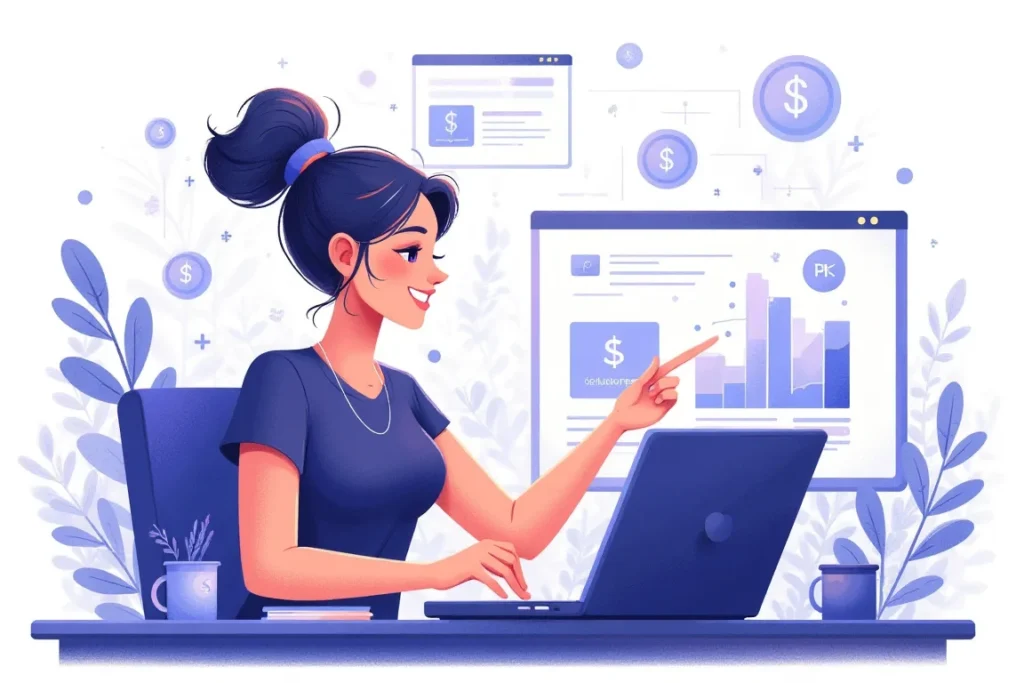You’ve found the perfect PLR digital product, but there’s one nagging worry: will customizing it land you in legal hot water? Copyright violations can cost between $200 and $150,000 per infringement, making this a legitimate concern for anyone looking to build a profitable digital business. The good news? With the right approach, you can safely customize PLR digital products without stepping into dangerous legal territory.
Key Takeaways
Private Label Rights (PLR) products offer incredible opportunities for quick business growth, but customization requires careful attention to legal details. Here’s what you need to know about how to customize PLR digital products without copyright issues:
- Review license agreements thoroughly – Each PLR product comes with specific terms that dictate what modifications you can make
- Understand the difference between PLR, MRR, and RR – PLR grants full customization rights, while other licenses have restrictions
- Verify content originality – Ensure the PLR material doesn’t infringe on existing copyrights or trademarks
- Maintain quality standards – Always review and improve PLR content before selling
- Keep detailed records – Document your customization rights and license agreements
- Focus on substantial modifications – Make meaningful changes to differentiate your product from the original
Looking for a head start on your PLR business? Ready-to-Sell Digital Products on plrbizhub.com provides fully licensed, high-quality PLR products that you can customize and sell immediately, saving you countless hours of research and content creation while ensuring complete legal compliance.
Understanding PLR Licensing Fundamentals
When diving into PLR customization, your first step involves understanding what Private Label Rights actually means. PLR grants you the most comprehensive licensing freedom among digital product rights, allowing you to modify, rebrand, and sell products as your own creation.
Unlike traditional copyright where creators retain exclusive control, PLR flips this model entirely. You’re purchasing not just the product, but the rights to transform it into something uniquely yours. This fundamental difference makes PLR products incredibly valuable for entrepreneurs who want to build digital businesses quickly.
However, this freedom comes with responsibilities. PLR doesn’t transfer the original copyright to you – it grants specific usage rights outlined in the license agreement. Understanding this distinction helps you avoid overstepping legal boundaries while maximizing your customization opportunities.
Different Types of Digital Product Rights
The digital rights landscape includes several licensing types, each with distinct limitations:
Resell Rights (RR) provide basic permission to sell products as-is without modifications. You cannot change content, branding, or presentation – just resell the original product.
Master Resell Rights (MRR) allow you to sell both the product and the resell rights to others. However, you still cannot modify the original content or claim authorship.
Private Label Rights (PLR) offer complete customization freedom. You can rewrite content, add your branding, change formatting, combine with other materials, and present the final product as your original creation.
This hierarchy matters because violating license terms can result in legal action, platform bans, and financial penalties. Always verify which rights you’ve purchased before beginning customization.
Useful Articles:
Legal Framework For PLR Customization
Copyright law provides the foundation for all PLR transactions. When you purchase PLR products, you’re entering a licensing agreement that operates within existing copyright protections. The original creator maintains copyright ownership while granting you specific usage permissions.
Understanding this relationship helps you navigate customization boundaries safely. Your PLR license defines exactly what modifications you can make without infringing on the original creator’s retained rights.
Reading License Agreements Effectively
Every PLR product includes a license agreement that serves as your legal roadmap for customization. These agreements typically address several critical areas:
Modification permissions specify which elements you can change. Some licenses allow complete rewrites, while others restrict certain sections or require attribution.
Branding requirements outline whether you must maintain original creator credits, can add your own branding, or must remove all previous branding elements.
Distribution channels may limit where you can sell modified products. Some licenses prohibit certain platforms or require specific distribution methods.
Time limitations occasionally apply to PLR licenses, though most grant permanent usage rights.
Quantity restrictions might limit how many copies you can sell or distribute.
Reading license agreements carefully prevents costly mistakes and ensures your customization efforts remain legally sound. When terms seem unclear, contacting the original creator for clarification protects your business interests.
Verifying Content Originality
Before customizing any PLR product, verify that the content doesn’t infringe existing copyrights or trademarks. Original PLR creators should provide content that’s free from third-party claims, but verification adds an extra protection layer.
Use plagiarism detection tools to check text-based content against online sources. Search for unique phrases or concepts to identify potential copyright conflicts. For visual content, reverse image searches help identify copyrighted materials.
This verification process protects you from unknowingly distributing infringing content, which could result in DMCA takedowns, legal action, or platform penalties regardless of your PLR license.
Strategic Customization Approaches
Effective PLR customization goes beyond simple cosmetic changes. Your goal involves transforming generic content into valuable, branded products that serve your target audience’s specific needs.
Content Transformation Techniques
Rewriting and restructuring allows you to inject your voice and expertise into PLR materials. Change sentence structures, update examples, add personal insights, and reorganize information flow to match your brand personality.
Combining multiple sources creates more comprehensive products. Merge related PLR items, add original research, include case studies, and supplement with current industry data to increase value.
Format conversion expands your product portfolio. Transform PLR ebooks into video courses, create infographics from written content, develop email sequences from articles, or build interactive worksheets from static materials.
Audience-specific adaptation makes generic content relevant to your particular market. Adjust language, examples, and applications to match your audience’s experience level, industry focus, or geographic location.
Branding Integration Methods
Your branding strategy should seamlessly integrate with PLR content while maintaining legal compliance. Replace generic placeholder text with your business information, but ensure license terms permit complete rebranding.
Visual branding elements include logos, color schemes, fonts, and design templates that reflect your business identity. Apply these consistently across all customized PLR products to build brand recognition.
Voice and tone alignment ensures customized content sounds like your other materials. Adjust writing style, terminology, and communication approach to match your established brand voice.
Value-added elements differentiate your customized products from others using the same PLR source. Include bonus materials, exclusive resources, implementation guides, or access to private communities.
Useful Articles:
Quality Control And Enhancement Strategies
PLR products vary significantly in quality, making thorough review and enhancement essential for successful customization. Your reputation depends on delivering valuable, well-crafted products regardless of their PLR origins.
Content Review Process
Establish systematic review procedures to identify areas needing improvement. Check for factual accuracy, outdated information, grammatical errors, formatting issues, and logical flow problems.
Fact-checking ensures all claims, statistics, and references remain current and accurate. Update outdated information, verify sources, and replace obsolete examples with current alternatives.
Grammar and style editing improves readability and professionalism. Correct spelling errors, fix punctuation issues, improve sentence structure, and maintain consistent formatting throughout.
Logical organization helps readers follow your content easily. Reorganize sections for better flow, add transitions between topics, include clear headings, and create logical progression from basic to advanced concepts.
Value Enhancement Techniques
Transform basic PLR content into premium products through strategic enhancements:
Additional research adds depth and credibility. Include recent studies, expert quotes, industry statistics, and current examples that support key points.
Interactive elements increase engagement and practical value. Add worksheets, checklists, templates, assessments, or planning tools that help readers implement the content.
Multimedia integration appeals to different learning styles. Include relevant images, diagrams, audio recordings, video demonstrations, or interactive presentations where appropriate.
Implementation guidance bridges the gap between information and action. Provide step-by-step instructions, troubleshooting tips, recommended tools, and success metrics for measuring progress.
Platform Compliance Considerations
Different selling platforms maintain varying requirements for PLR-based products, making compliance awareness crucial for long-term success. Major platforms like Amazon, Etsy, and digital product marketplaces each have specific policies regarding resale rights and content originality.
Platform-Specific Requirements
Amazon requires proof of resale authorization for digital products and may reject content that appears too similar to existing listings. Their algorithms can detect duplicate or near-duplicate content, making substantial customization essential.
Etsy focuses on handmade and unique items, so PLR products must be significantly modified to meet their originality standards. Basic customization typically isn’t sufficient for Etsy approval.
Digital marketplaces often have specific PLR policies that outline minimum customization requirements. Some platforms prohibit PLR-based products entirely, while others welcome them with proper disclosure.
Understanding each platform’s policies before listing prevents account suspensions and ensures your customized products meet marketplace standards.
Record Keeping Best Practices
Maintain detailed documentation of your PLR customization rights and modifications. This documentation protects your business if licensing disputes arise and demonstrates your compliance efforts to platform reviewers.
License agreement copies should be stored securely with clear product identification. Include purchase receipts, communication with creators, and any clarifications about usage terms.
Modification records document the changes you’ve made to original PLR content. Keep before-and-after comparisons, outline major revisions, and note additional elements you’ve added.
Sales tracking helps you monitor which customized products perform best and ensures you don’t exceed any quantity limitations in your licensing agreements.
Useful Articles:
Advanced Customization Strategies
Once you master basic PLR customization, advanced strategies can significantly increase your product value and market differentiation.
Multi-Source Integration
Combining content from multiple PLR sources creates more comprehensive, valuable products. This approach requires careful attention to licensing compatibility and content flow.
Complementary content merging involves combining PLR products that cover related topics. For example, merge a PLR ebook about social media marketing with another about content creation to create a comprehensive digital marketing guide.
Gap filling addresses missing information in PLR products by adding content from additional sources or your own expertise. This creates more complete, valuable products for your audience.
Format diversification uses different PLR sources to create multi-format product packages. Combine PLR text with PLR graphics, videos, and templates to offer comprehensive learning experiences.
Niche-Specific Adaptation
Adapting PLR content for specific niches or industries dramatically increases its value and reduces competition from others using the same source material.
Industry-specific examples replace generic illustrations with relevant case studies, terminology, and scenarios that resonate with your target market.
Skill level adjustments modify content complexity to match your audience’s expertise. Simplify advanced concepts for beginners or add technical depth for experienced professionals.
Cultural adaptation adjusts content for different geographic markets, cultural contexts, or demographic groups while maintaining the core value proposition.
Technical Considerations For Digital Products
PLR customization often involves technical aspects that affect product quality and user experience. Understanding these elements helps you create professional, functional digital products.
File Format Optimization
Different product types require specific file formats for optimal user experience and platform compatibility.
PDF optimization ensures your customized ebooks display properly across devices. Use appropriate compression, embed fonts correctly, and optimize images for file size without sacrificing quality.
Video specifications matter for PLR video content customization. Maintain appropriate resolution, audio quality, and file formats that work across various devices and platforms.
Interactive elements may require specific technical implementation. Ensure forms, links, and multimedia elements function correctly after customization.
Design And Layout Enhancement
Visual presentation significantly impacts perceived value and user engagement with your customized PLR products.
Professional formatting includes consistent fonts, proper spacing, logical hierarchy, and clean layouts that enhance readability and credibility.
Brand-consistent design applies your visual identity throughout the product while maintaining professional appearance and user-friendly navigation.
Mobile optimization ensures your customized products work well on smartphones and tablets, expanding your potential market reach.
Scaling Your PLR Customization Business
As your PLR business grows, efficient systems and processes become essential for maintaining quality while increasing output.
Workflow Optimization
Develop standardized procedures for evaluating, customizing, and launching PLR products efficiently.
Evaluation criteria help you quickly assess PLR products’ potential value, customization requirements, and market fit before purchase.
Customization templates provide consistent frameworks for modifying different types of PLR content while maintaining your brand standards.
Quality checkpoints ensure every product meets your standards before release, protecting your reputation and customer satisfaction.
Team Building Considerations
Growing PLR businesses often require additional team members to handle increased workload while maintaining quality standards.
Writer recruitment involves finding professionals who understand your brand voice and can handle content customization efficiently.
Design specialists help maintain visual consistency across your customized product line and create professional-looking materials.
Quality control specialists review customized products for accuracy, consistency, and compliance before release.
Understanding how to customize PLR digital products without copyright issues opens doors to rapid business growth while protecting your legal interests. With proper attention to licensing terms, content quality, and platform requirements, PLR products become powerful tools for building successful digital businesses that serve your audience effectively.




